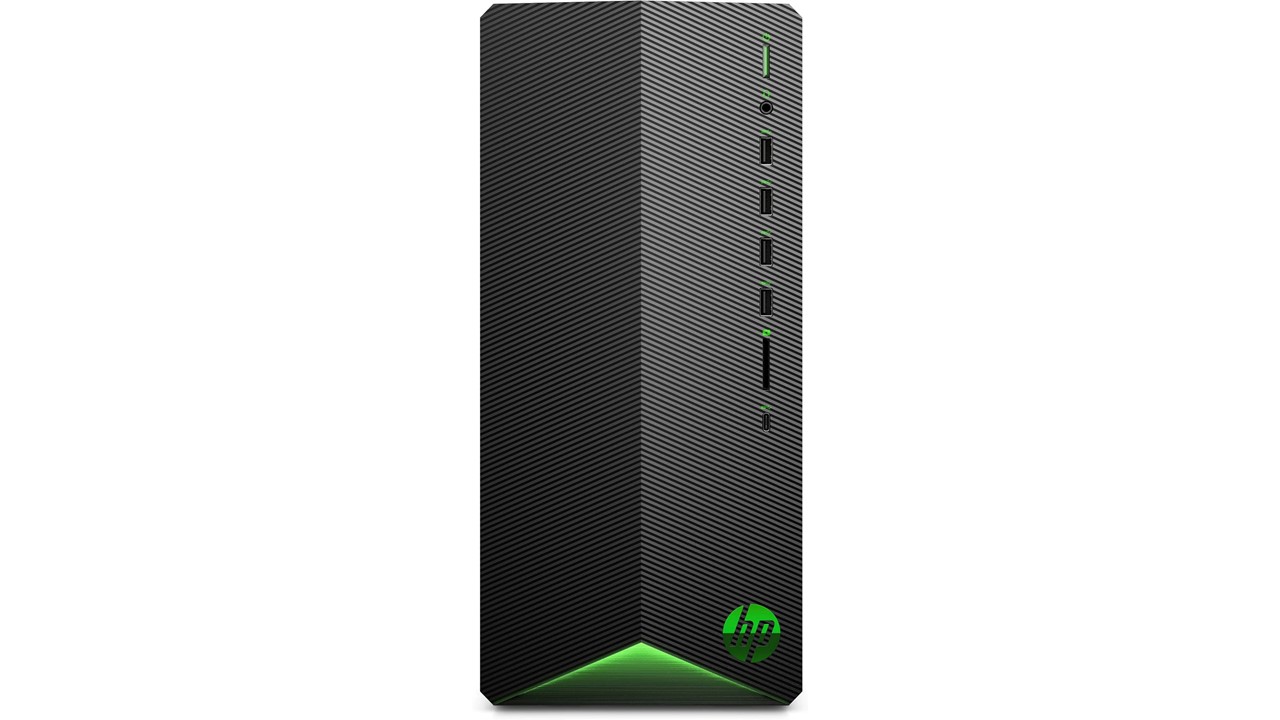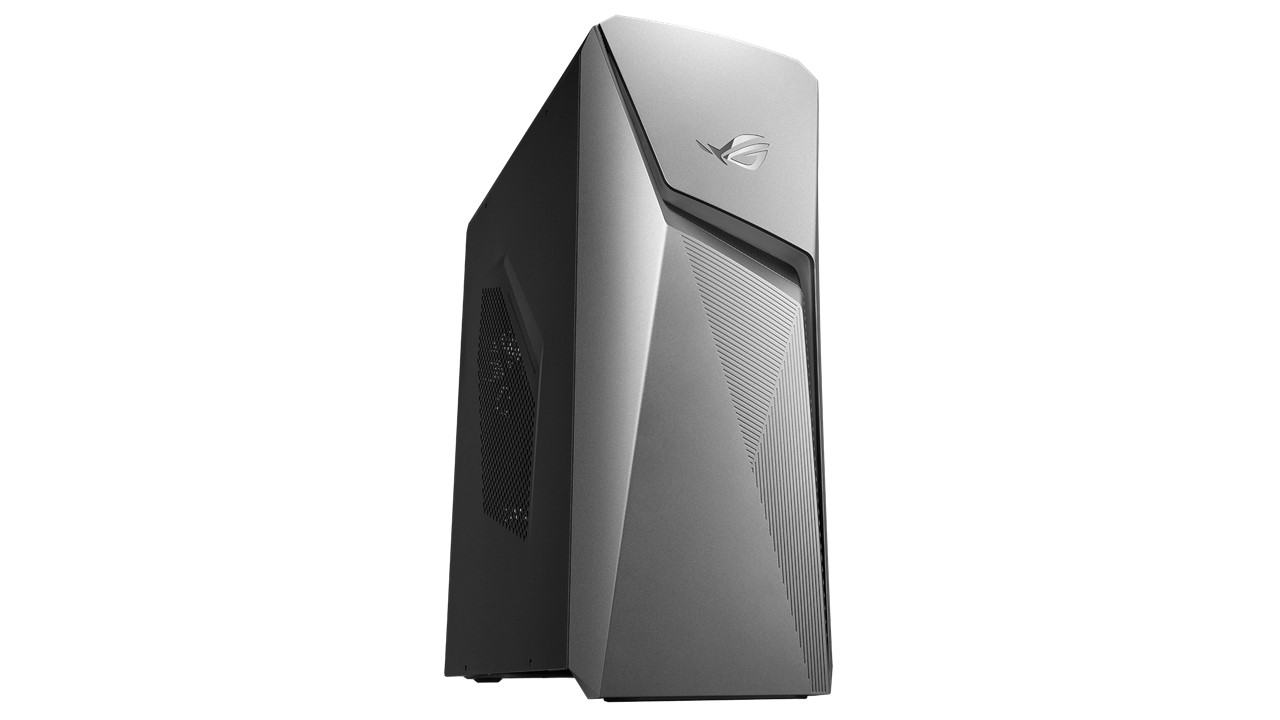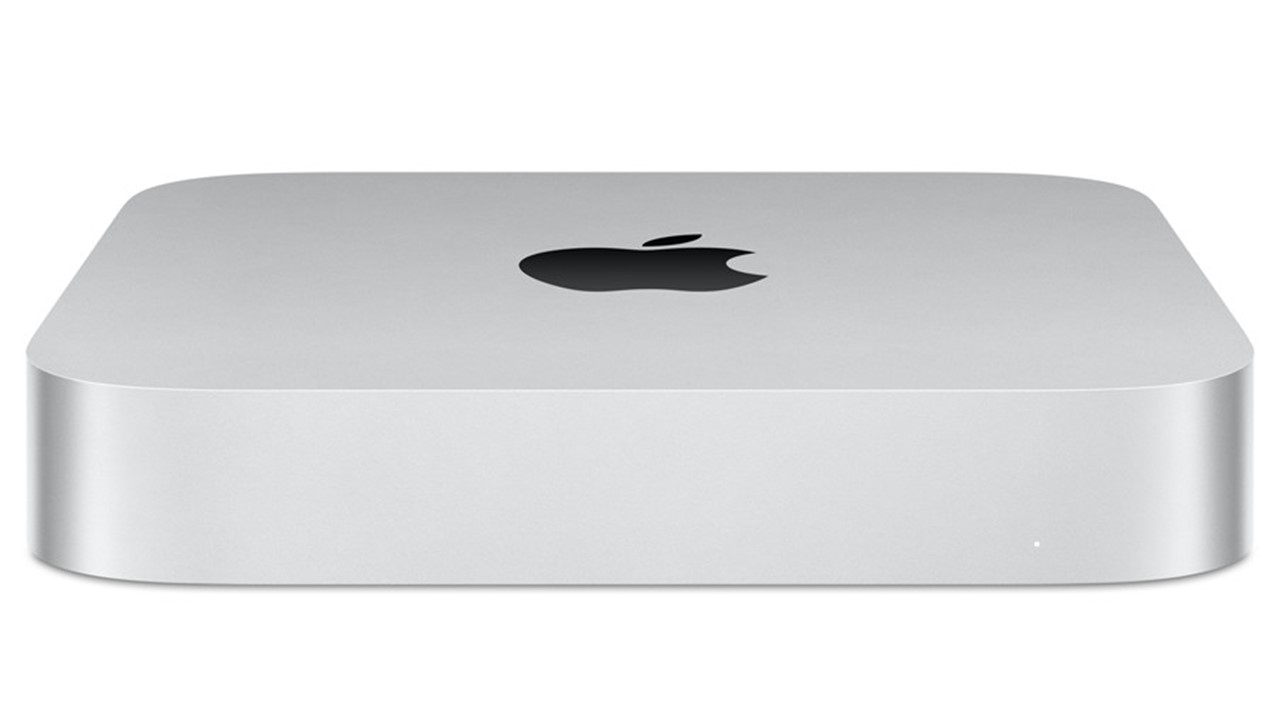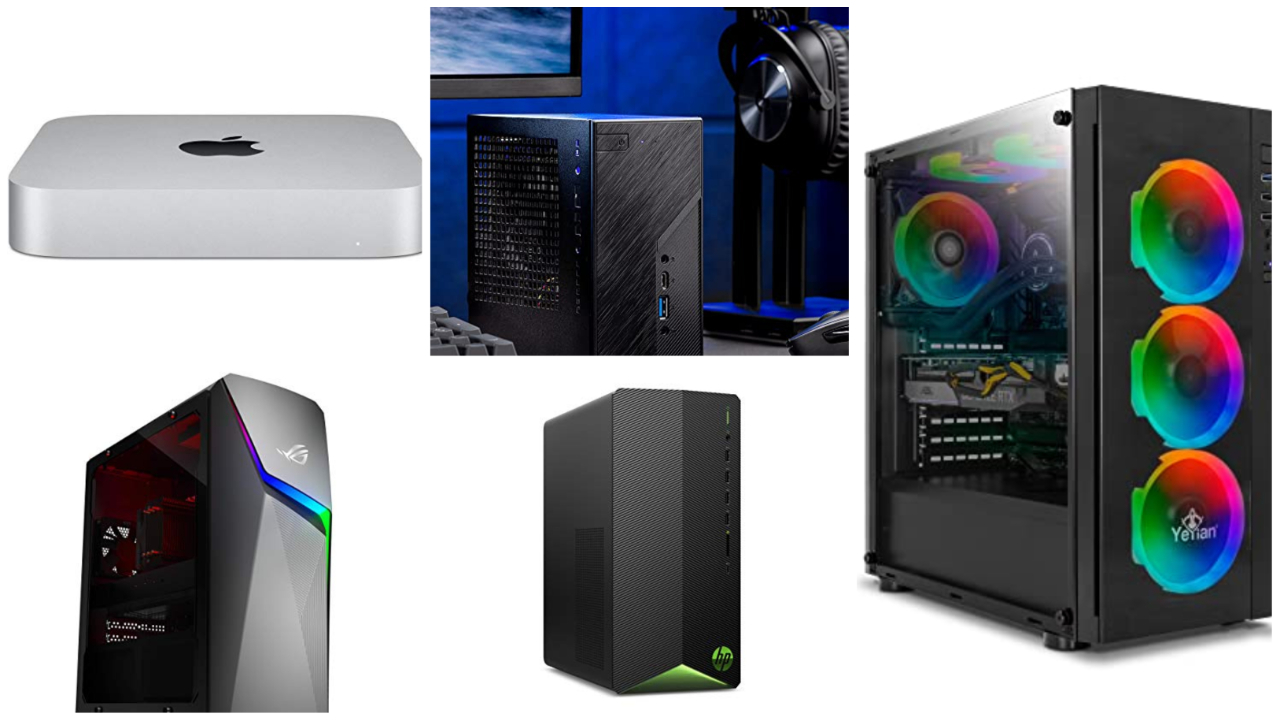With the help of a training cycle and software like Zwift, it is never too difficult to start burning those extra calories. Using a desktop for Zwift has its advantages, and as you would see it can be used with your smartphone as well.
TOP PICKS:
In This Article
Minimum & Recommended System Requirements for Zwift
To run a virtual cycling and running platform like Zwift you need to maintain standard minimum system requirements like an Intel Core i5-10400F processor, 8GB of RAM, an AMD Radeon graphics card, and 256GB of SSD.
By maintaining these configurations the experience that you will get may not be as smooth as desired.
For optimal performance, you need to choose a desktop that comes with an Intel 12th Gen Intel i7 processor, 32GB of RAM, an NVIDIA GeForce RTX 3070, and 1TB of NVMe Gen 4 SSD.
Minimum System Requirements: Intel Core i5-10400F | 8GB RAM | AMD Radeon Graphics | 256GB SSD.
Recommended System Requirements: Intel 12th Gen Alder Lake i7-12700KF or better processor | 32GB RAM or more | NVIDIA GeForce RTX 3070 or better GPU | 1TB NVMe Gen 4 SSD or more storage.
5 Best Desktops for Zwift:
1. YEYIAN Katana X21A – Overall Best

Bottom Line: For the presence of an updated processor and a powerful GPU, the users can get top-notch processing while enjoying Zwift on this desktop; even this is the best option for this purpose.
Key Features:
- Processor: Intel 12th Gen Alder Lake i7-12700KF
- Graphics: NVIDIA GeForce RTX 3070
- OS: Windows 11 64-bit
- RAM: 32GB
- Storage: 1TB NVMe Gen 4 SSD
Pros
- Liquid cooling technology with 120mm AIO
- Wi-Fi 6 interface and USB Type-C port
- Color adjustable ARGB ring fans with tempered glass side panel
Cons
- An optical drive is missing
- Expensive
- Not a compact design
This desktop comes with an Intel Core i7-12700KF 12-Core processor, NVIDIA GeForce RTX 3070 graphics card, 32GB RAM, and 1TB NVMe Gen 4 SSD which help this PC to handle Zwift smoothly under any circumstances.
The 12-Core processor offers enough power to the PC to deliver an efficient performance during intense gaming sessions.
The NVIDIA GeForce RTX 3070 graphics card is one of the best options at this time and with its help, the desktop can generate high-quality visuals.
With 32GB of RAM, the computer can handle multiple tasks and applications smoothly.
Overall, this desktop offers the perfect combination of power and speed, making it an ideal choice for running Zwift.
2. HP Pavilion TG01 Gaming Desktop – Runner up

Bottom Line: A budget desktop that can power up Zwift when you are in the mood to commit some hours to train is this desktop from HP. Be it a solo session, or an online trip with others from around the world, the desktop brings great graphics and performance to you, which you can enjoy from the safety of your home.
Key Features:
- Processor: Intel Core i5-10400F
- Graphics: NVIDIA GTX 1650
- OS: Windows 10
- RAM: 8 GB
- Storage: 256 GB SSD
Pros
- Decent specs
- Good connectivity features
- Decent storage configuration
Cons
- The limited scope of expansion
- Fans can get loud at times
- Requires tools for upgrades
Talking about compact and budget-friendly gaming desktops, here’s one that many of you gamers might be familiar with.
The HP Pavilion TG01 may not have flashy RGB lights or an out-of-the-world design, but it still makes heads turn.
This is the Intel version of the PC, though there are Intel options available as well.
So you see a Core i5 CPU here, that has got 6 cores and 12 threads, and provides a maximum boost frequency of 4.3 GHz.
If you are to use Zwift at moderate to high settings, then you’d have no difficulties at all.
Then there is the GTX 1650 GPU that offers enough VRAM so that the visuals are also enjoyable. Other than minor lags and stutters in the crowded places on a map, the overall experience would be great.
The good things prevail in the RAM and Storage department as well, since 8 GB of memory and a 256 GB SSD are present.
The same is for connectivity too, as all the necessary ports and inbuilt WIFI and Bluetooth are available.
3. Skytech Mini PC X1 – Value for Money

Bottom Line: If you are an entry-level user of Zwift then you can go with this value-for-money PC. This desktop is packed with a decent amount of specifications and is also available at an affordable price tag.
Key Features:
- Processor: AMD Ryzen 5 5600G
- Graphics: AMD Radeon Graphics
- OS: Windows 10 Home 64-bit
- RAM: 16GB
- Storage: 500GB NVME SSD
Pros
- Ryzen 5 processor at an affordable price tag
- Option to attach multiple monitors
- Updated Wi-Fi interface
Cons
- Overheating issues
- Not easily upgradeable
- No RGB fans support
The Skytech Mini PC X1 is a good and affordable option for running Zwift because it comes with a Ryzen 5 processor and an AMD Radeon graphics card.
To enjoy this game on this PC, you need to keep the game settings as comprehensive as possible.
Additionally, it comes with 16GB of DDR4 RAM and a 500GB SSD, which help the PC to generate fast and smooth performance while running the game.
It also has plenty of updated ports including HDMI, a display port, USB 3.0, and 3.2 Gen1.
So the users can attach multiple displays with this PC and can easily attach multiple gaming peripherals, and other devices.
4. Asus ROG Strix GL10DH – For the live Streamer who Also Wants to Stay Fit

Bottom Line: When using the Asus GL10DH, it won’t matter if you’re an occasional Live Streamer or would like to do so regularly. Either way, it has got enough potential to provide a smooth experience, every time you are online. Be it Zwift or any game for that matter, this is one extremely useful and budget-friendly desktop.
Key Features:
- Processor: AMD Ryzen 7 3700X
- Graphics: NVIDIA GeForce GTX 1660 Ti
- OS: Windows 10 Home
- RAM: 16 GB
- Storage: 512 GB SSD
Pros
- Robust specs
- Compact size
- Affordable price tag
Cons
- Upgrading to a bigger GPU can be troublesome
- Heating issues at times
- Often not available
Next comes the Asus ROG Strix GL10DH which is also a decent choice for you if you’re looking for an affordably priced desktop to run Zwift, stream your training sessions, create videos about it, and so on.
And not only that, it is quite compact as well so storing it in your Zwift “pain cave” shouldn’t be a problem at all.
This variant of the desktop has got a Ryzen 7 3700X processor, with 8 cores and a maximum clock rate of 4.4 GHz. You get 16 gigs of RAM, which can also be upgraded when needed.
Not just gaming or Zwift performance, if you’re also looking for a streaming rig then this is a very wise choice. You can also play the game in the highest settings.
Along with impressive CPU performance, the rig also provides extremely competitive graphics performance as well since it has a GTX 1660 Ti GPU in it.
There is a 512 GB SSD fitted in the GL10DH, which seems to be enough for immediate needs. There are free slots to add SSD or HDD storage too.
In the connectivity department too, you wouldn’t be disappointed since there are more than enough USB ports and a Gigabit Ethernet slot so that a fast internet connection can be added.
There is another variant that the desktop comes in as well that provides a better RTX 2070 Super video card, though it won’t be necessary for Zwift.
5. Apple Mac Mini – The Ideal NUC or Apple TV Replacement

Bottom Line: Although more expensive than an Apple TV, the M1 Mac Minis still have a lot of utility when one’s primary concern is running Zwift. And not just running it, the M1 processor allows the user to get the full experience and its size ensures that you’d have no trouble storing it in your training room.
Key Features:
- Processor: M1 Silicon Chip
- Graphics: Apple M1 Graphics
- OS: Mac OS
- RAM: 16 GB
- Storage: 256 GB SSD
Pros
- Mac OS runs Zwift highly optimized
- Highly small in size
- Ample RAM and Storage options
Cons
- Slightly expensive than other Mini PCs
- The limited scope of upgrades
- Intel versions had more ports
If you’d prefer a smaller form factor desktop to run Zwift, then the Apple Mac Mini is just the thing for you.
Now, this is the newer M1 version, and given the tasks at hand, this device fits perfectly in the job description.
Now unlike other desktops on the list, the Mac Mini takes a fraction of space on your desk and is practically invisible if you place it correctly.
These newer ones are even slimmer than those that came with the Intel CPUs, all the more advantageous to you.
The specs include the 8 core M1 silicon processor with the integrated graphics unit that Apple manufactures, 16 gigs of RAM, and SSD storage.
And while a regular-sized GPU may not fit in it, the graphics that these processors come with would be enough for the heaviest kinds of usage.
There are enough ports, including USB 4 ones, and not just that, it also has WIFI 6 and Bluetooth 5.0, and you won’t have to worry about connectivity anymore.
The small size of the Apple Mac Mini and all the features included make a really strong argument in its favor, and the price tag is not that big of a concern anymore either.
For those who have the needs, this is a really good option to consider.
How to Choose a Best Desktop for Zwift?

Before you dedicate an entire room for training and invest money or time for it, it is very important to select the device on which Zwift would run.
The choice is quite flexible, and even a smartphone would do, but you won’t be getting the full experience then.
The good news is you won’t have to buy a pricey gaming desktop with flashing RGB or top-of-the-line hardware.
A simple setup, with a desktop having a decent configuration is good enough, at least to start with.
Zwift roughly takes up as much system resources as needed to run an entry-level game in the highest settings.
But since not every one of you here is a gamer, we would be talking about things more elaborately.
A few right choices would make sure you can train just the way you want to, while also saving money.
Here, however, we would be talking about the desktop that you can use mainly, along with some other accessories that you’d need.
Budget
Many decide that they’d be spending a lot of money on fitness equipment, trainers, and such, while others start small. We have no idea which one of these you are, but we can help in either case.
For Zwift, every kind of setup that you can have serves the same purpose to be honest, but like most cases spending more provides you with certain added features and benefits.
A smart training bike, for example, gives you more access to controlling the amount of resistance you want to train within Zwift.
Add a big display and a few other accessories, and you have the ultimate setup.
While it may sound good, realistically very few would find it affordable. Worry not, since as long as you have a bike, a set of rollers, a smartphone or an iPad, and a speed sensor, you can start using Zwift.
Adding a desktop is a solid upgrade from a low-end setup such as this, and while we cannot suggest what the overall setup would cost you, we can however help you with deciding the budget for the desktop.
The ideal choice would be to buy a decent mid-range desktop, and you can expect to have one around $700-$1200.
There isn’t simply a point to spend more since there is only so much a desktop can do. And you can rather spend the money on other parts of your Zwift setup.
You might as well go cheaper, and an entry-level desktop, gaming or not, can run Zwift well enough with certain cases.
You might have to tone down graphics, but it’s worth it if you aren’t willing to pay more.
OS
The choice of the OS, at least when we are talking about mainstream desktops, is either Mac or Windows. So, any average Mac or Windows computer can be used for Zwift, as long as it isn’t too old.
What matters here is if you have a preference and the budget. We wouldn’t suggest you buying an iMac just because you plan to train on Zoom.
But if you have other stuff to do that would benefit the Mac OS or a Mac desktop as a whole, then there is no doubt you should be buying one.
Some people who prefer the Mac environment, choose an Apple TV device instead, which has Bluetooth support and lets the users watch the usual television.
There are yet others who simply buy an iPhone or an iPad or some other Android smartphone or tablet, but that’s not very relevant to our discussion here.
Form Factor
The amount you pay makes a very noticeable difference in the form factor of the desktop, which might just affect the performance of Zwift, but only slightly.
Now, this is one of those cases where a large desktop with heavy-weight components won’t do you much good, and even an SFF desktop with the right components should get you training intensively, without having to wait for the desktop to finish up processing.
One other thing that can determine the size of your desktop is the size of the room that you use for training or the “pain cave” as it is popularly called.
You’d already have things like a bike, a stand, along with other things needed for training, so too big a desktop would cause more inconvenience rather.
While it is unlikely, though not impossible, that you’d use the same room for doing other things on the desktop, then you can surely go for a mid-tower.
Also, if you play games or use components that require more space inside the chassis, then a bigger cabinet is the better choice.
So basically, you can manage with any smaller form factor, while if you have the budget and enough space, a full tower desktop can be bought as well.
Processor
Zwift is like any other game, and being so the processor plays a big role in how well it would run on your desktop.
However, it isn’t the resource-intensive kind, so you won’t have to buy the fastest processor out there, and a mid-range one should be good enough for a comfortable enough experience.
The lowest you can go is with a quad-core processor, like the Core i3-9100F or the Ryzen 3 3100, and we would not suggest going below that.
Also, these are only good if you have little else to do on your desktop other than running Zwift.
So basically, what benefits this software or game more is the maximum clock rate a CPU can achieve, which makes the entire process smoother and faster.
You can rely on the basic turbo-boosting that almost every processor today comes with, and overclocking the system wouldn’t be necessary.
But in no way should you be concerned about too many cores, unless of course, you are streaming your training session.
Many creators Livestream Zwift, and if you are one of them, keep an eye on the number of cores that you are getting as well.
If you are one of the heavy users, then at least 6 cores on the CPU of your desktop would be preferred.
And this isn’t a specific Zwift requirement, as most streamers have a similar, if not more, core count on the processor. Because things like Livestreaming or video editing are quite heavy tasks.
Graphics
The scenes and visuals on Zwift are quite realistic, and the official recommendations say, you’d need at least a 2 GB video card for a decent enough experience.
In reality, even integrated graphics can be enough, while depending on usage, mid-range GPUs may also be needed.
It all depends on how much you can spend, and the kind of experience you are looking for.
Like those looking to play at 25-30 fps can do so even without a dedicated video card, while the 4K fans would need at least a 6 GB GPU.
And though the frame rates or display resolution have nothing to do with you being fit, many prefer better visuals just for the sake of it.
Some AMD APUs offer better-integrated graphics than those found in the Intel processors, and these can be a good option for budget buyers.
One of these APUs wouldn’t cost much, while the graphics would still be handled well, and Zwift would run just fine, albeit with a few dropped frames.
If you’re at all considering dedicated graphics, then NVIDIA is the better choice over AMD.
It has been seen that as Zwift uses OpenGL, GPUs of the latter brand are not as good as the former when their performances in this software are taken into account.
Keeping all this in mind, we have included certain alternatives in the list above, as you might have already seen.
So, if you’re looking for a good enough experience on a limited budget, a 2-3 GB video card will do.
With slightly heavier needs, a GTX 1050 Ti or GTX 1650 (the regular one, Super and Ti iterations, the last one being for laptops only) should be good.
Even better would be an RTX 2060 or GTX 1660 Ti, and these also offer VR functionality, which can make your exercise sessions far more entertaining. But there are no better returns above this point.
Zwift has not yet integrated ray-tracing in it, so even a pricey RTX GPU won’t be able to provide you better visuals.
RAM
Having a dedicated GPU does handle graphics better with its VRAM, but system memory is needed for the processor and other tasks not related to graphics.
While you would be sweating on your bike, without adequate system memory the processor would do so as well while running the various processes, and that wouldn’t be desirable.
But since Zwift doesn’t require a mighty gaming desktop, I wouldn’t worry too much. A modest 8+ GB of RAM should be good for now, as well as the foreseeable future.
You can equip some more and add up the RAM to 16 GB, but that’s about it.
More RAM would be necessary when you’re taking part in group-rides and when there are too many riders in your proximity.
Some extra RAM might help the processor to steer out of such tight places, although you’d still notice some lag, no matter how much RAM you put in.
This goes for the CPU and GPU as well, and hence we wouldn’t suggest you spend too much, as there is only so much the hardware can do.
Storage
Then there’s storage, and the choice of the storage drive, might up to some extent, make this software run faster on your desktop.
While the role of the storage drive is not as great as any other component, it can still make a difference.
So how does one utilize it? Simple, just use an SSD. Now, this cannot be said that every Zwift user in the world uses an SSD on their computer, but those who do surely notice better responses.
An SSD upgrade often improves a struggling Zwift, and this costs much less than replacing any other part of their PC.
However, SSDs can still be quite expensive in terms of storage drives, and often people prefer the SATA SSDs, which aren’t as fast as the PCIe kind but are surely cheaper. They are better than traditional hard drives at least.
Depending on what other work you do on the desktop, you’d have to select one or more storage drives accordingly.
Connectivity
While a lot of things on Zwift rely on Wireless connections, there are yet some things that would need the usual ports and slots that are present in any typical desktop.
Audio ports for adding speakers or video ports for adding monitors or a VR headset are just some of these.
What’s very important for you is an Internet connection, and although the game still works offline after you log in to your account, you would have to be online most of the time.
You can use WIFI to reduce the number of cables lying around, or use the Ethernet port on the desktop.
But you’d never be able to use Zwift for its intended purpose without Bluetooth or an ANT+ connection since the transmission of fitness data is extremely important.
Now in all probability, a new desktop should have inbuilt Bluetooth, but if it doesn’t, make sure you have the scope of adding one later on.
Certain smart bikes already come with ANT+ or Bluetooth, and sometimes both together.
All you need then is an ANT+ dongle that would be connected to a free USB port on your desktop, and maybe a USB extension cord.
Accessories
When using Zwift, you’d be on your treadmill or training cycle most of the time, but still, it wouldn’t be right if you cheap out on the accessories.
A few obvious things would be needed, relating to the desktop that you have chosen.
The first of these is a monitor, which would make the most difference to the overall experience.
At this point, the free space you have and the other work you do would largely determine the size and resolution of the monitor. For Zwift specifically, a 24-28″ FHD display is more than sufficient.
With the monitor, it is natural that you’d also buy a keyboard and a mouse, and also speakers. The quality of these is at your discretion, depending on the budget you have.
Now Zwift uses Bluetooth or ANT+, and as we said you might need a dedicated adapter for the latter. Some devices already come with it, while people have to buy these separately in most cases.
One other thing that you may purchase is a VR headset, which would provide an even more realistic experience in Zwift.
As long as you don’t mistakenly run off from the treadmill, your training session would be quite entertaining when you use the VR features being offered.
Questions & Answers:
Does ZWift run on Windows 10?
Yes, among many other Operating Systems, Windows 10 is also one that supports Zwift. So if you were looking forward to buying a Windows PC for this purpose, then you can surely do so. The desktops we have mentioned above and the Buyer’s Guide should be of help to you.
Can your PC run Zwift?
If your desktop has at least a quad-core CPU, with 6-8 GB of RAM and an entry-level GPU, then you might just be able to run Zwift. Integrated Graphics works too, given that there is enough RAM and the CPU in your desktop is a decent one.
But a dedicated GPU can surely improve the frame rates.
Finishing up
So, you may have understood by now that fitness is not something that requires you to spend a lot of money. One doesn’t even need to go to a Gym anymore, thanks to software like this one.
With the entertaining environment that Zwift offers, all you need is some space in your house and a few tools, not to mention a computer being one of them.


